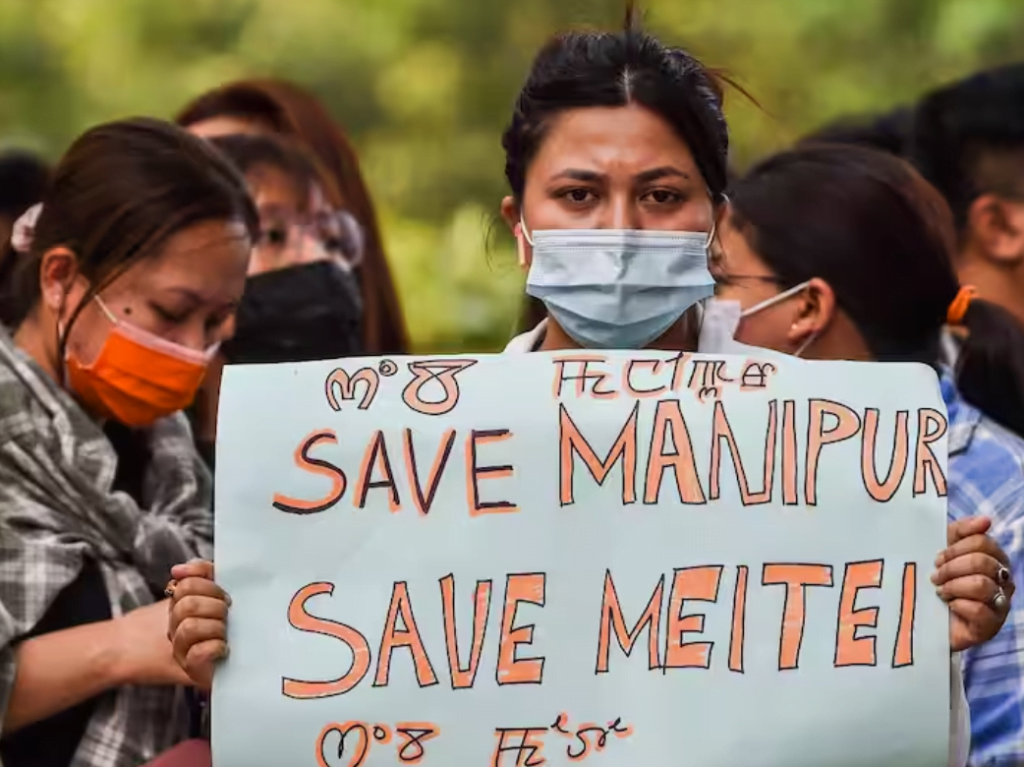Introduction:
Manipur, a state nestled in the northeastern region of India, is blessed with abundant natural beauty and cultural diversity. However, beneath its picturesque landscapes lies a complex web of socio-political issues that have plagued the region for decades. The “Manipur problem” refers to the ongoing challenges and conflicts faced by the state, hindering its progress and stability. In this article, we will explore the top 5 reasons behind the Manipur problem, seeking to shed light on the historical, political, and social factors that have contributed to its complexities.
What is the Manipur problem?
The Manipur problem refers to the various issues and conflicts that have persisted in the state of Manipur over the years. These issues encompass a wide range of concerns, including insurgency, ethnic tensions, demands for greater autonomy, and issues related to governance and development. The complexity of the Manipur problem is rooted in historical events, territorial disputes, and the aspirations of different communities residing in the state.
When did the Manipur problem begin?
The origins of the Manipur problem can be traced back to the colonial era when Manipur was gradually brought under British rule during the 19th century. The state’s merger with the Indian Union in 1949 further shaped the political landscape and set the stage for various contentious issues that continue to influence the region’s dynamics. Over the decades, tensions and conflicts have erupted at different intervals, making the Manipur problem a long-standing challenge.
Where is the Manipur problem concentrated?
The Manipur problem primarily affects the state of Manipur, located in northeastern India. Bordered by Nagaland, Mizoram, and Assam, Manipur is characterized by its diverse ethnic groups, each with distinct cultural identities and aspirations. The problems are concentrated within Manipur’s borders, but the regional implications and broader implications on northeastern India cannot be overlooked.
Who are the key players involved in the Manipur problem?
Various stakeholders play crucial roles in the Manipur problem. These include the state government, central government, insurgent groups, ethnic communities, and civil society organizations. The state government is responsible for governance and maintaining law and order, while the central government plays a significant role in shaping policies and providing financial support. Insurgent groups have been central to the conflicts in the region, fighting for separate identity and political autonomy. Additionally, the diverse ethnic communities and their respective aspirations add complexity to the situation.
Why has the Manipur problem persisted?
The Manipur problem is deeply rooted in historical grievances, perceived marginalization, and competing political aspirations. Some of the key reasons behind its persistence are as follows:
a) Ethno-cultural Diversity: Manipur is home to multiple ethnic communities, each with its unique cultural identity and demands. Tensions arise due to perceived threats to their identities and struggles for political representation and control over resources.
b) Insurgency and Armed Movements: The region has witnessed several insurgencies and armed movements seeking political autonomy or independence. These movements have contributed to a sense of insecurity and instability.
c) Territorial Disputes: Border disputes with neighboring states have further complicated matters, leading to occasional tensions and conflicts.
d) Lack of Development: Socio-economic development remains uneven across Manipur, with certain regions facing neglect and underdevelopment. This disparity fuels grievances and discontent among marginalized communities.
e) Governance and Administrative Challenges: Inefficient governance, corruption, and lack of proper infrastructure have hindered progress and development in the state.
Which incidents have escalated the Manipur problem?
Several incidents have significantly escalated the Manipur problem over the years. Some of the notable events include:
a) The Manipur Merger: The state’s merger with the Indian Union in 1949 resulted in debates over the legitimacy of the agreement, leading to demands for greater autonomy and even independence.
b) The Naga Issue: The Naga insurgency, which began in the neighboring state of Nagaland, spilled over into Manipur, leading to ethnic tensions and conflicts between different communities.
c) Armed Conflicts: Ongoing armed conflicts between insurgent groups and security forces have resulted in violence, loss of lives, and a climate of fear and instability.
d) Economic Blockades: Periodic economic blockades imposed on the state’s highways by different groups have exacerbated the region’s isolation and dependence on essential supplies.
e) Political Unrest: Political tensions and uncertainties surrounding governance and leadership have also contributed to the Manipur problem.
Whose responsibility is it to address the Manipur problem?
Addressing the Manipur problem requires a collective effort from all stakeholders. The state government must focus on good governance, equitable development, and addressing the aspirations of various communities. The central government plays a crucial role in formulating policies that promote inclusivity and regional development. Insurgent groups must consider peaceful dialogue and political participation to seek resolution to their grievances. Civil society organizations and citizens can contribute through advocacy, promoting peace-building initiatives, and fostering inter-community dialogue.
Conclusion: The Manipur problem is a multifaceted issue deeply embedded in historical, political, and socio-economic complexities. Its resolution demands a comprehensive approach that involves dialogue, inclusivity, and genuine efforts to address the grievances of different communities. By acknowledging the region’s diverse cultural fabric and striving for equitable development, Manipur can overcome its challenges and pave the way for a more harmonious and prosperous future. With the support of all stakeholders and the wider Indian society, the state can embrace its potential as a vibrant and integral part of India’s diverse tapestry.



